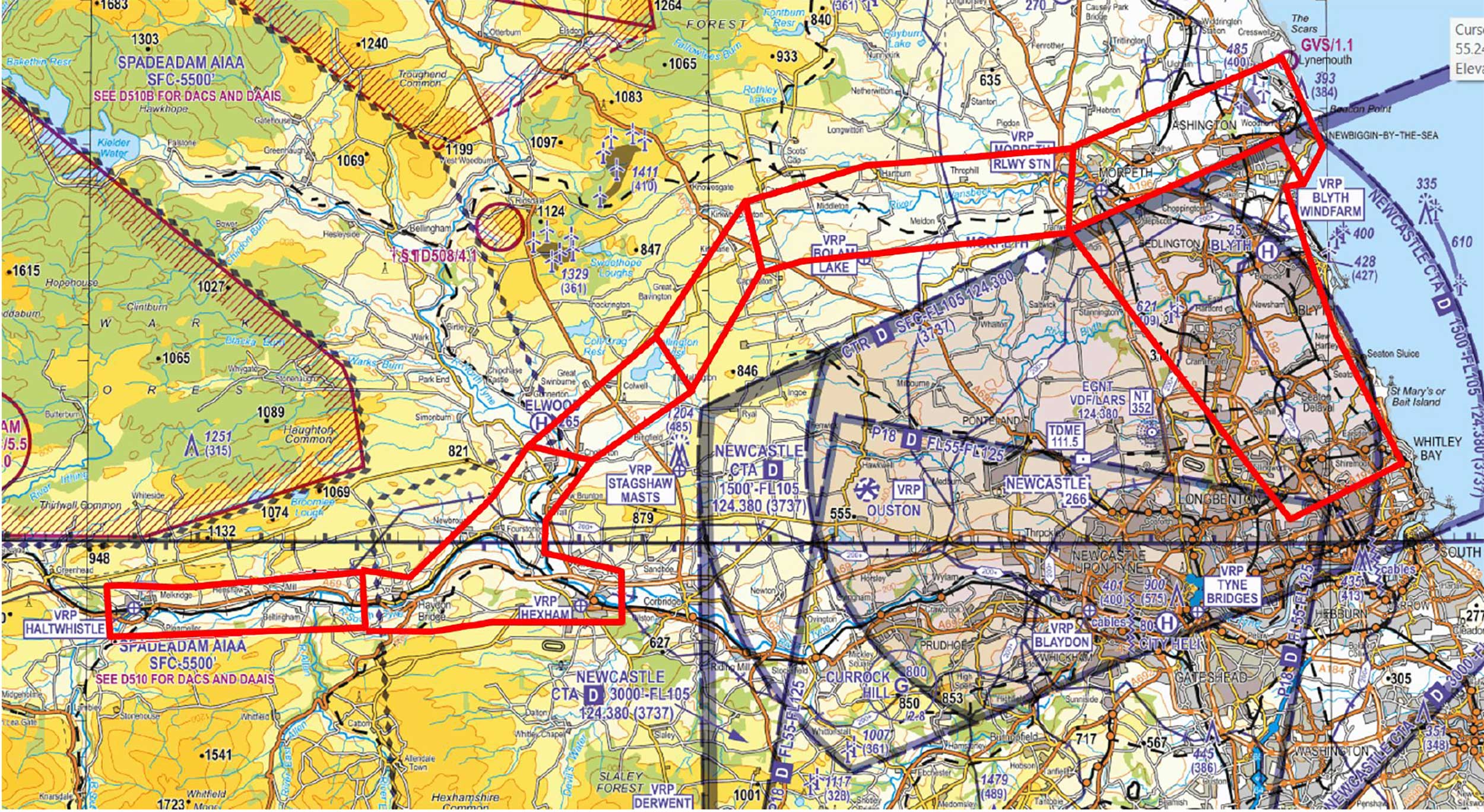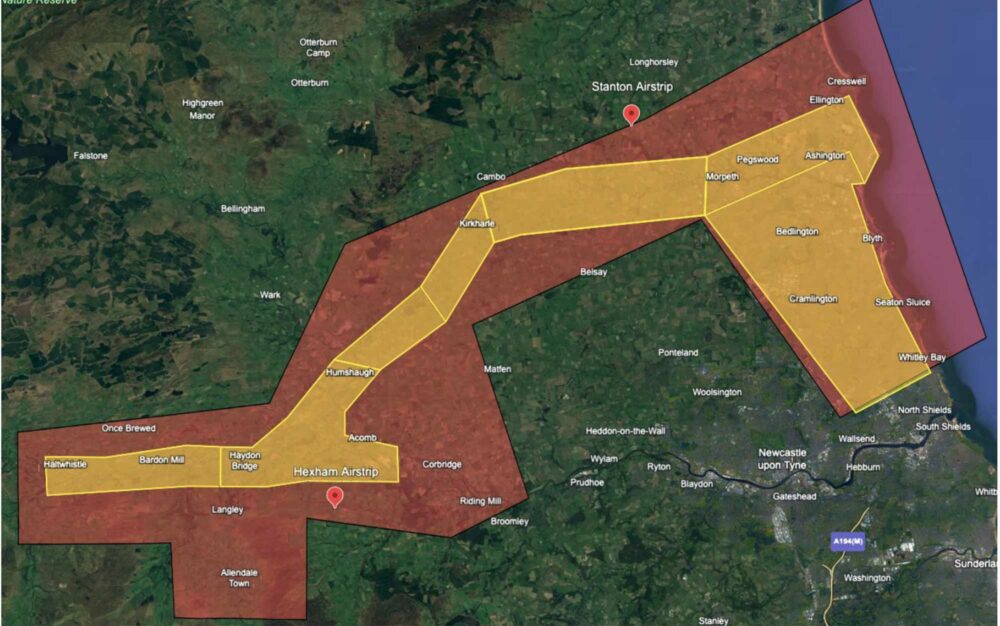A huge response from pilots, industry and flying associations has led to major changes in how the proposed Apian Northumbria NHS drone trial will be implemented.
The response was so effective that drone company Apian has revised the timeline of its Airspace Change Proposal. The formal ACP submission has been pushed back from October 2023 by four months to February 2024. Apian’s revised plan is to start the trials on 14 May 2024 for six months.
Rebecca Clulow, the airspace lead at Apian, said, “We received over 150 responses, conducted visits to various stakeholder sites and ran a ‘town hall’ event, which allowed us to speak directly with the aviation community about their ideas, concerns and expectations.
“We would like to thank everyone who took the time to respond. The feedback we received was very useful, and gave us an improved understanding of flying in the local area and how our proposed TDA may impact that.
“In particular, some important safety issues were raised by the aviation community. As a direct result of this feedback and detailed discussions, we have made extensive changes to the TDA from what was previously proposed.”

How the revised Temporary Danger Area looks on the CAA chart
How Apian has changed its drone trial
- Hexham and Stanton airstrips: “We have updated the TDA design to move both Hexham and Stanton outside of it. We have discussed with those airstrips a suitable avoidance distance of their operations and reflected that in this revised TDA. TDA heights have been adjusted to ensure climb out routes from those airstrips are not affected.”
- Coastline: “We have moved the edge of the TDA inland, to ensure GA can follow the coastline routing when required. We have re-designed the edge of the TDA in this location to allow airspace users who enjoy flying from the coastline the ability to do this, with minimal impact. We have also reduced the heights of the TDA in this area, to ensure suitable space is provided between the TDA and Newcastle CTR.”
- Size of airspace and ‘choke points’: “Some of the more advanced flightpath management features of the UAS have been adjusted, this allows us to safely reduce the UAS operating area and reduce the TDA vertical limits. We will be limiting the UAS movements to below 400 ft AGL. We believe this will provide safer transit routes and negate having to call Newcastle ATC for zone transits.”
- TDA too high, restricting safe flying to remain visual with the ground: “We have reduced the TDA dimensions (vertically and laterally) to reduce the airspace being proposed.”
- Airspace west of Newcastle CTR, plus north-south route: “We have removed outlier delivery sites, and replaced with new sites inside the revised TDA. This has enabled us to reduce the TDA to ensure sufficient space to route to the west of the CTR. We have also reduced the heights allowing a smaller volume of airspace being requested.”
- Why 24 hours a day and 7 days a week?: “We will now be reducing the hours of operations. Our proposed operations will be Monday to Friday, 0800-1800 hours. Deliveries to Haltwhistle will now be restricted to a smaller delivery window from Monday to Friday between 0900-1300 hours. This will be published by NOTAM. The six-month trial will include two weekends of extended hours UAS flights, providing valuable data on out-of-hours NHS deliveries. “
- Routing east/west (between Hexham and Haltwhistle) when cloud base is below 2000ft: “We have adjusted our TDA laterally in this area, allowing us to reduce the vertical limits as well.”
There will be another stakeholder engagement period between 27 October and 8 December 2023. Please use this link to provide feedback.
Airspace Change Proposal
It costs just £5 per month to join The FLYER Club. You’ll get access to all of our content, our free landing fees every month, the weekly members’ Livestream on Wednesdays, plus our monthly webinar. Join today by visiting flyer.co.uk/membership













